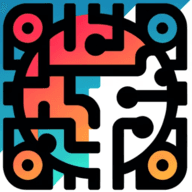What Project Management Techniques Have You Used When Leading IT Initiatives?
Diving into the world of IT project management, we've gathered insights from top IT leaders, including CEOs and Senior Project Managers. From combining Semi-Agile methodologies with clear communication to implementing Agile for effective management, explore the four successful techniques these professionals have shared.
- Combine Semi-Agile with Clear Communication
- Visualize Tasks with Kanban Boards
- Hold Regular Development Scrums
- Implement Agile for Effective Management
Combine Semi-Agile with Clear Communication
As the CEO of Asymm, a successful project management technique I've used when leading IT initiatives is the semi-agile methodology combined with clear communication channels. Semi-agile allows us to break down complex projects into manageable sprints that are predefined, yet invite some level of changes to ensure we meet minor changing requirements. This fosters flexibility and iterative progress while enforcing that we stick to a defined plan for a product or software build. We start this by defining clear project goals and assembling an outline for the software build, categorized by features and functionality. Frequent stand-up meetings keep everyone aligned and allow for quick identification and resolution of issues. We use project management tools like JIRA to track progress and maintain transparency.
Additionally, we emphasize regular stakeholder reviews at the end of each sprint to ensure that the project remains on track and meets business objectives. This iterative approach, coupled with continuous feedback loops, enables us to adapt to changes quickly and deliver high-quality results. By fostering an environment of open communication and collaboration, we ensure that all team members are engaged and aligned, leading to the successful completion of IT initiatives.
Visualize Tasks with Kanban Boards
An effective technique is using Kanban boards to visualize project tasks and progress. Kanban boards provide a clear, visual representation of all project tasks, categorized into columns like "To Do," "In Progress," and "Done." This method helps the team see the project's status at a glance and understand the workflow better.
By making the process transparent, it encourages accountability and ensures that no task falls through the cracks. It also helps in identifying bottlenecks in the process, allowing for timely interventions. This visual approach has been particularly useful in managing complex projects with multiple dependencies and ensuring smooth coordination among team members.
Hold Regular Development Scrums
Consistent, scheduled internal scrums are very important when leading larger development projects. Holding a 15-minute scrum two to three times a week to ensure that the phase of the project we are working on is on track has done a lot for our team, especially when we are all working remotely in different time zones. The information shared in these scrums is extremely valuable, so I can communicate with clients and discuss potential roadblocks to finishing a task within the current phase of the project. We also discuss upcoming tasks and make sure the team has everything they need to complete them.

Implement Agile for Effective Management
Agile methodology is the best in IT projects. Particularly, project management becomes more effective and fast. With regular and quick meetings, Agile project management has the advantage of bringing together all the main people who work on the project, to measure the proper development, and to adjust based on the upcoming value that product owners discover.




